Affiliate disclosure: This post may contain affiliate links. Please see our Privacy Policy.
Chokecherry jelly is a tasty wild foraged preserve that you just can’t buy in the store. Since they’re naturally high in pectin, it’s easy to make your own jelly (or jam) with just sugar and a splash of lemon juice.
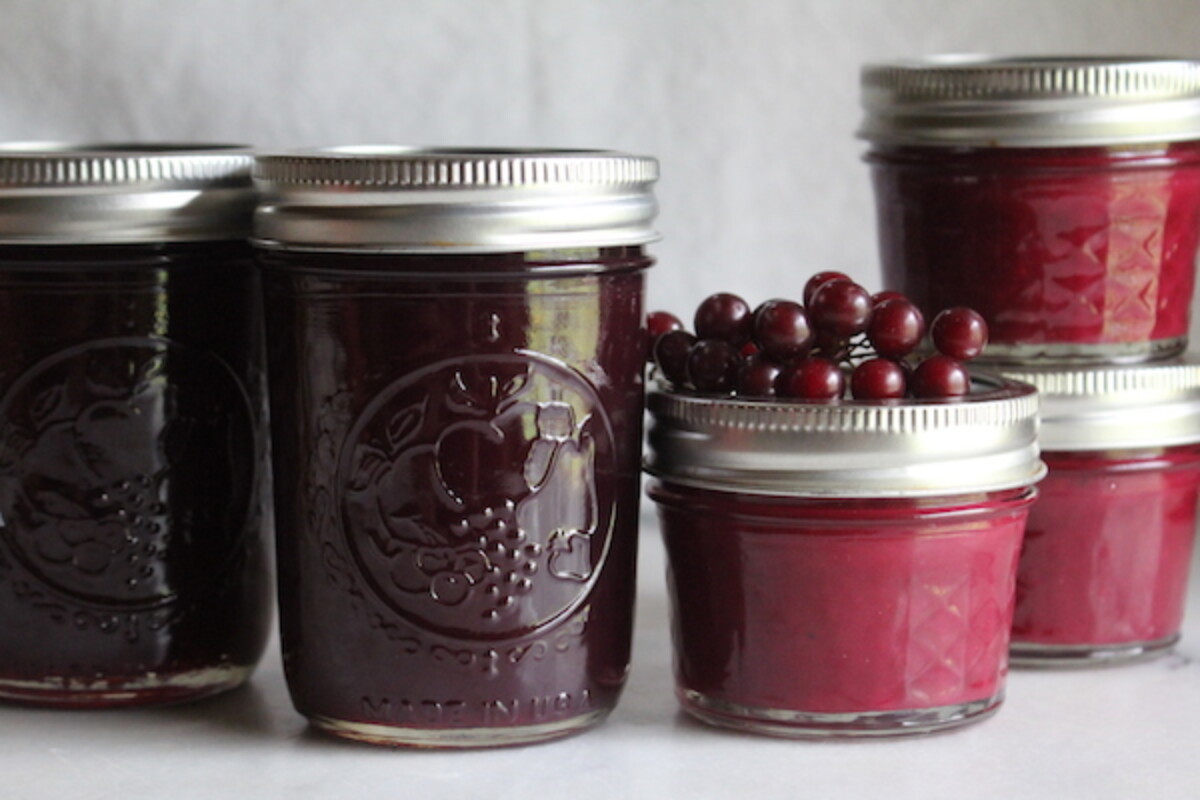
As one of the most common hedgerow fruits, wild chokecherries are easy to forage in great quantity. Identifying chokecherries is generally simple since they grow in clusters from distinctive shrubs.
Their closest look-alike is wild black cherry and though the plants look similar, the fruit has a somewhat different taste. Around these parts, black cherries are sweet but relatively bland, and they don’t make nearly as interesting a jelly. They’re a tasty edible, actually a bit tastier out of hand than chokecherries.
If you’re not sure if you have black cherry or chokecherry, give the fruit a taste. If they taste like cherries, that’s what you’ve got, and they’re best fresh. If they give your tongue and taste buds a thrill ride, then chokecherries it is, and those will make an epic chokecherry jelly.
Watch out for plants like buckthorn (also black small black fruits) and invasive honeysuckle (bright red fruits), they ripen at the same time as chokecherries but are born singularly on the shrubs. (They’re only vaguely similar to chokecherries, and hard to mistake if close up.)
Still, be sure you’ve positively ID the plant before you begin.

Once you’re sure that you’ve found chokecherry shrubs, be sure to wait until they’re fully ripe.
The fruit clusters start out a bright red but usually ripen to a deep red or near-black color. Taste a few, and if they’re incredibly bitter and sour, wait a bit longer. It’s tricky since raccoons and bears tend to strip the plants the second they’re ripe…check back frequently if you want to beat the wildlife.
Since they’re a wild fruit, all plants are a bit different, and they’ll all ripen at different stages. Some of the plants we frequent ripen fully at bright red and are quite sweet. Others are still a bit astringent even when fully black.
That’s part of the fun, learning your particular patches’ quirks, and making a truly one of a kind chokecherry jelly.
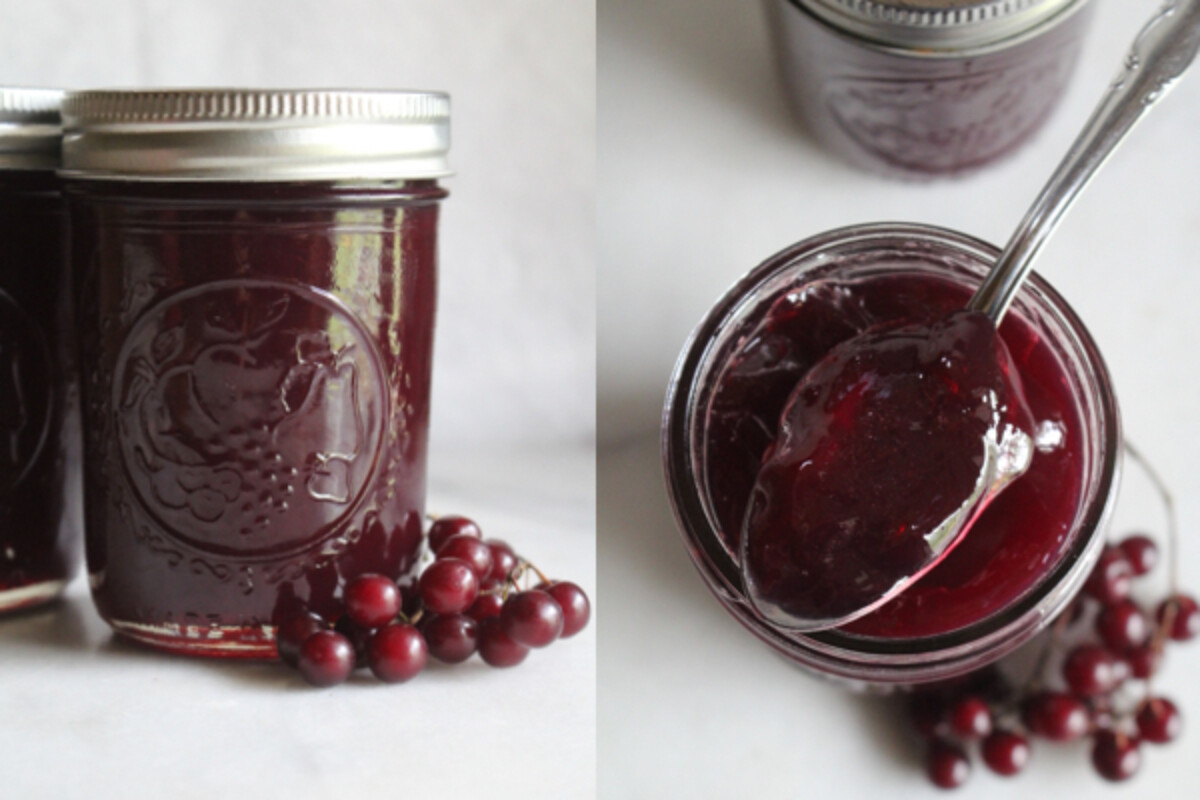
Ingredients Chokecherry Jelly
Most chokecherry jelly recipes start out with a boatload of sugar, then toss in plenty of commercial pectin and finish with a splash of chokecherry juice for color. Why bother?
If you’re going to go through the trouble of foraging chokecherries in the first place, you might as well truly savor their unique flavor (rather than try to hide it).
I keep things simple with my chokecherry jelly. The ingredients list is short, and results in the best flavor (and texture) in my opinion:
- 4 cups chokecherry juice
- 2 cups sugar
- Juice of 1 lemon
The lemon juice is optional, but a bit of acidity helps bring out the flavor of the chokecherries and adds natural pectin that will increase the yield.
I think the problem might lie in the name “chokecherry” because anything with “choke” in the name must have to be buried in sugar to be palatable. Fully ripe chokecherries are actually reasonably sweet, and their astringent “choke” flavor all but disappears when they’re ready.
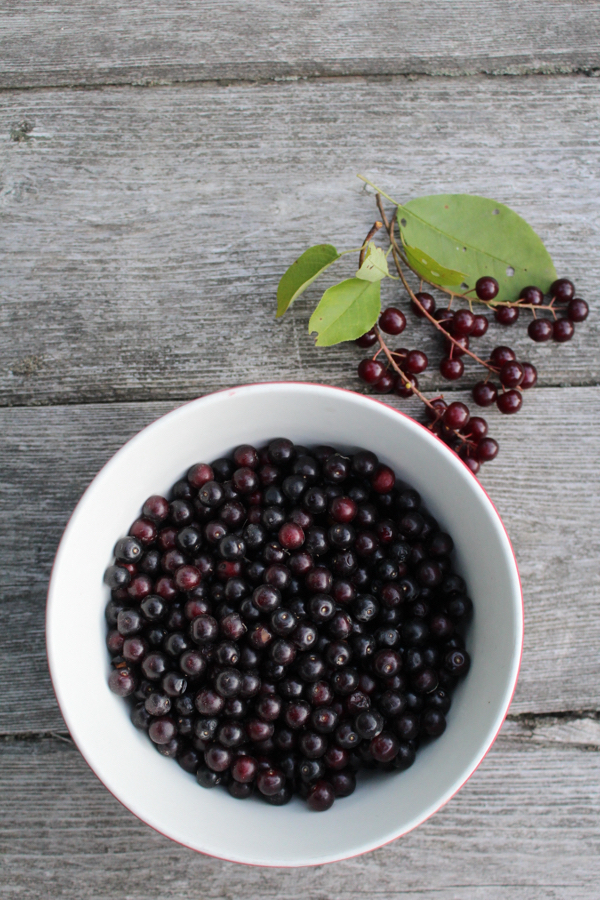
Starting with fully ripe chokecherries, I use 2 parts juice to 1 part sugar in my chokecherry jelly recipe. A standard batch takes the juice from 5-6 lbs of chokecherries (4 cups) and adds in 2 cups of sugar.
My second secret? Don’t add commercial pectin.
Chokecherries have a good bit of natural pectin, and they’re generally listed as a “moderate” pectin fruit. With patience, I’m easily able to make no pectin added jellies from low pectin fruits (like this raspberry jelly), so a moderate pectin fruit definitely doesn’t need the boxed stuff.
After about 15 minutes of cooking, the chokecherry jelly has reduced enough to gel all on its own. That means the flavor is concentrated a bit more than using the crutch of boxed pectin, and the texture is smoother (as natural pectin makes a silkier spread than the powdered stuff).
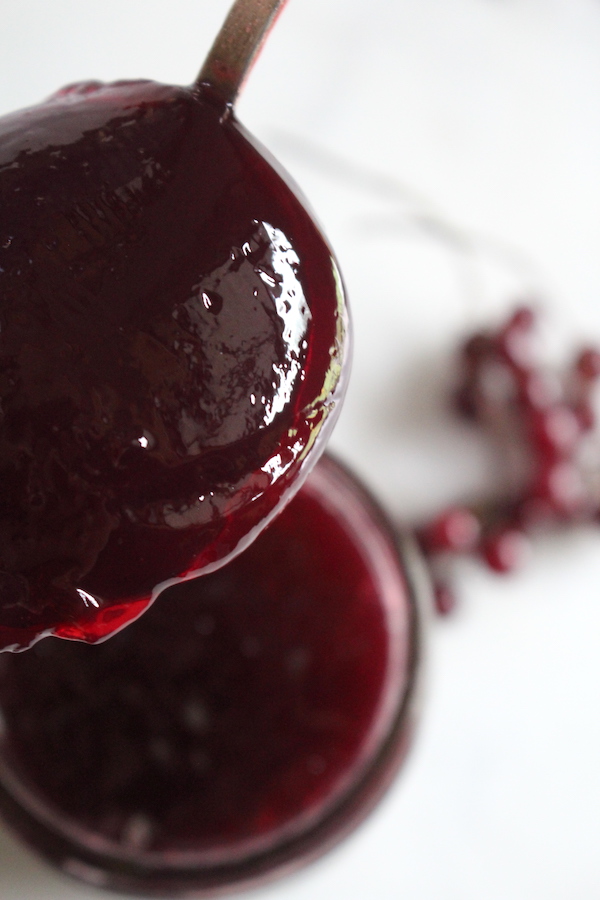
The finished chokecherry jelly comes out plenty sweet, and really full of flavor.
After going through all the effort of harvesting chokecherries, you might as well do it right and really savor all that they have to offer…
How to Make Chokecherry Jelly
Start by picking over the chokecherries and removing stems, leaves, and other debris.
It takes roughly 5-6 lbs of chokecherries to make 4 cups of juice for a small batch of chokecherry jelly. I use a steam juicer, which is very efficient at extracting the juice. It takes about an hour to fully steam extract, but the yield tends to be better than other methods (and it cooks and strains at the same time, saving time).
Without a steam juicer, simply place the stemmed chokecherries in a saucepan with 1 cup of water and bring to a simmer. Cook, stirring and mashing occasionally until they’ve released their juices (about 20-30 minutes).
Strain the mixture, either using a jelly bag or a cheesecloth-lined colander. Allow the chokecherries to drip for at least 2 hours (or up to overnight) for the best yield.
For a clear jelly, don’t squeeze the jelly bag, just allow it to drip by gravity. (For a higher yield, go ahead and squeeze out the last bits, just know that your jelly will be cloudy).
Measure the resulting juice. Since they’re a wild fruit, juice yields will vary, but I’d suggest starting with around 4 cups of chokecherry juice to a batch.
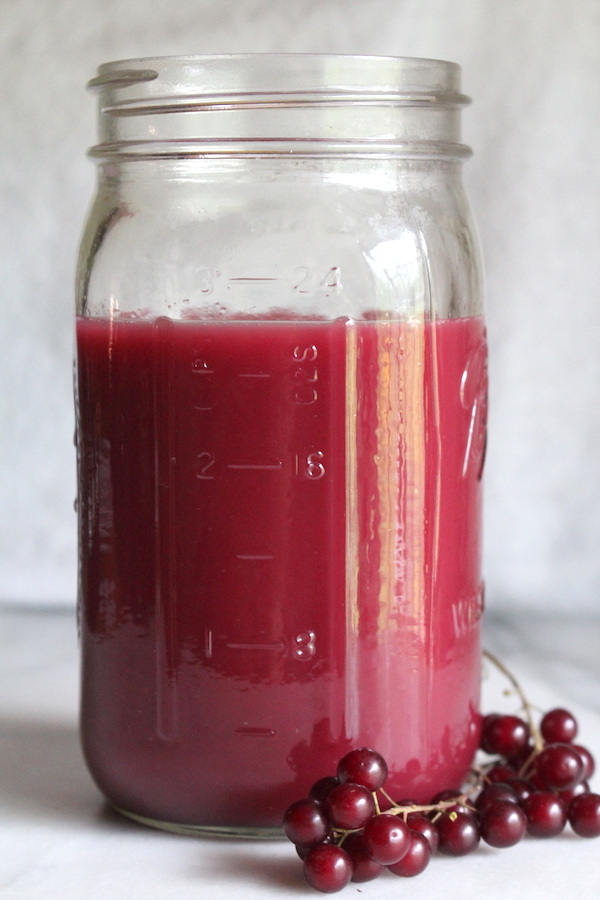
Place the measured juice into a jam pot and add half as much sugar. For 4 cups of juice, I add 2 cups of sugar.
(The amount of sugar is up to personal taste, and if you want a wicked sweet jelly, go ahead and add 4 to 6 cups of sugar. The yield will be higher, it’ll be much sweeter and the chokecherry flavor will be less concentrated. Totally up to you.)
I like to add a bit of lemon juice to my chokecherry jelly, but that’s completely optional. Chokecherries are naturally acidic fruits, with a pH of 3.86 to 4.25 (source). Anything below 4.6 can be safely canned in a water bath canner without added acid.
That said, the juice of one lemon really brightens the flavor and adds additional pectin to help the jelly set without commercial pectin. It’s completely optional, and feel free to leave it out.
Bring the chokecherry juice, sugar, and lemon juice (if using) to a hard boil on the stove. Like all jams/jellies, it’s going to bubble up substantially, so use a deep, heavy-bottomed jam pot and don’t fill it more than halfway.
Stir frequently to prevent scorching (and overflows), and cook at medium-high heat until it reaches gel stage (about 15-20 minutes).
Test for gelling on a plate that’s been placed in the freezer, or use an instant-read thermometer to see when it reaches 220 degrees F at sea level. (For higher elevations, subtract 1 degree for every 500 feet in elevation rise. I’m at 1000 feet, and my jellies finish at 218 F.)
Once the chokecherry jelly reaches gel stage, pour it into prepared jam jars.
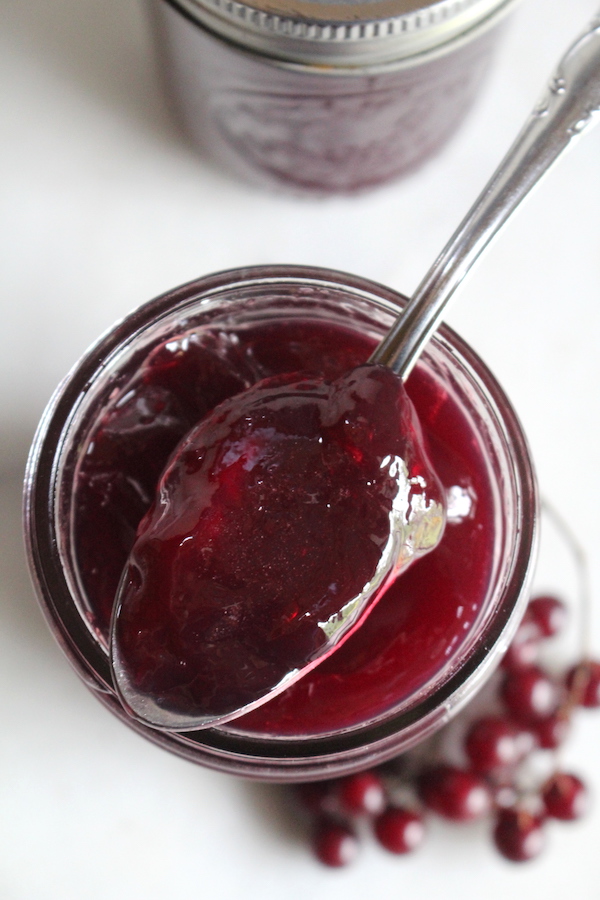
Canning Chokecherry Jelly
While you can easily make this a simple refrigerator or freezer jelly, this simple chokecherry jelly recipe is also ideal for canning. The fruits are acidic, so they can be safely water bath canned.
To can chokecherry jelly, prepare a water bath canner after you’ve extracted the juice, but before you start making the jelly. Fill canning jars with the finished jelly, leaving 1/4 inch headspace. Cap with 2 part canning lids and process in a water bath canner for 10 minutes.
Turn off the canner heat and allow the jelly jars to remain in the water for another 5 minutes before removing them to cool on a towel on the counter. This extra time in the canner helps the temperature stabilize, and will help prevent siphoning (leaking) when the hot jars are removed from the canner.
After 24 hours, check the seals and store any unsealed jars in the refrigerator for immediate use. Properly canned and sealed jars will keep in the pantry for 12-18 months. Once opened, store in the refrigerator and use within a few weeks.
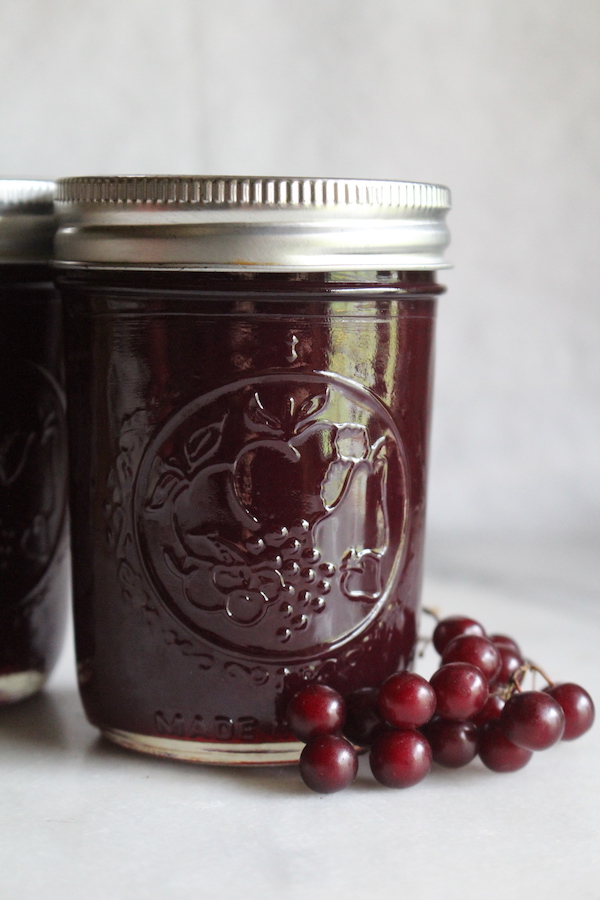
Experimenting with Chokecherry Jam (or Fruit Butter?)
After making chokecherry jelly, I started wondering if I could in fact make a chokecherry jam instead. While the seeds do need to be removed, I hated the idea of composting so much of the fruit pulp along with them.
I tried a jam-making technique that I use to make my cornelian cherry jam since they also have large seeds and are almost impossible to pit.
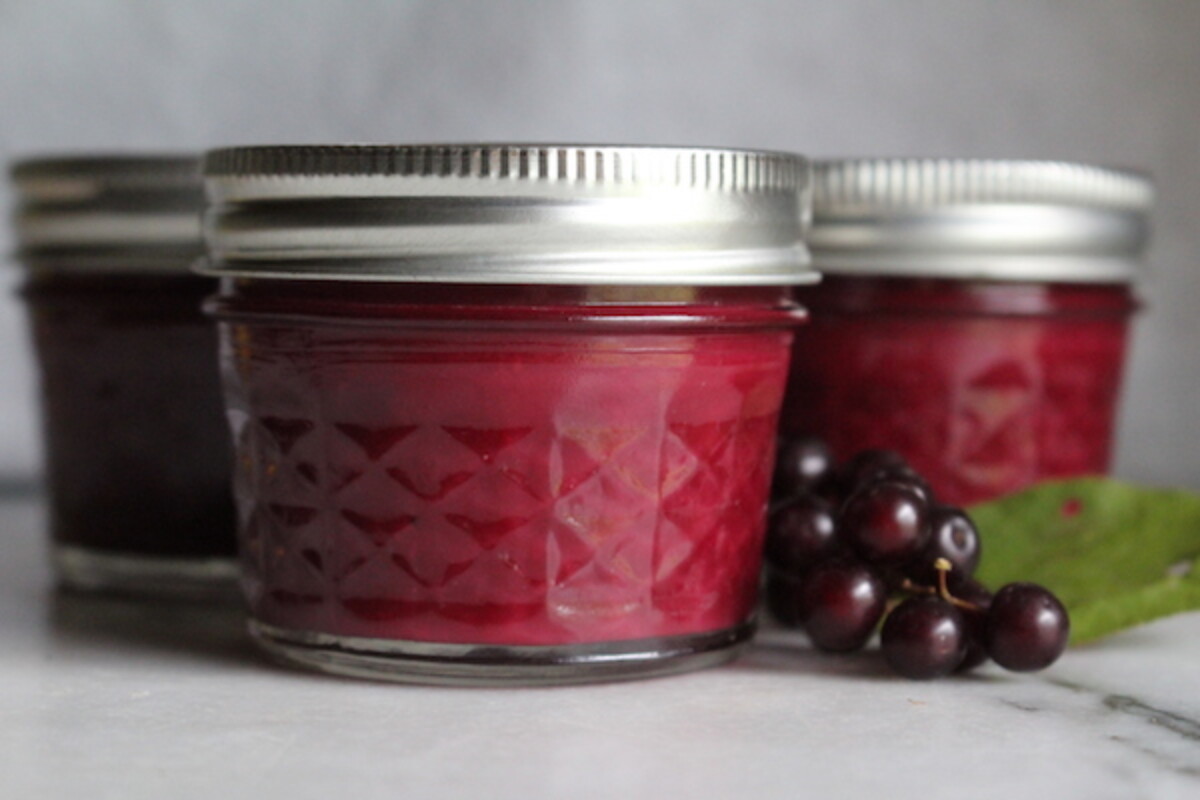
Cook the fruit as you would for jelly, but then instead of straining it all through a jelly bag, I used a spatula to press it through a fine-mesh strainer.
Working the fruit against the mesh, most of the pulp finds its way through, leaving just the seeds.
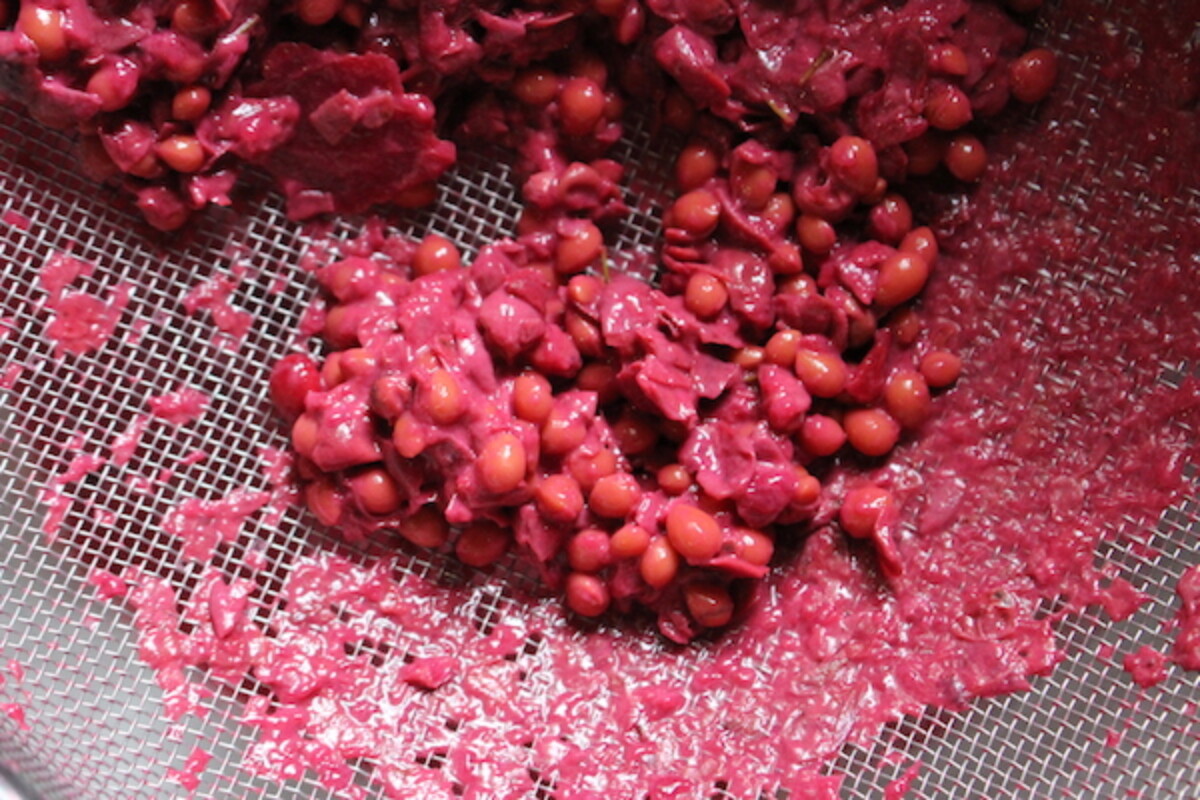
The result is somewhere between chokecherry jam and fruit butter.
Since the pulp is intact, with all that pectin still in there, the chokecherry jam set up much faster. I just barely had to bring the mixture to a boil before it reached the gel stage.
Once in the jars, the chokecherry jam was almost like a jello.
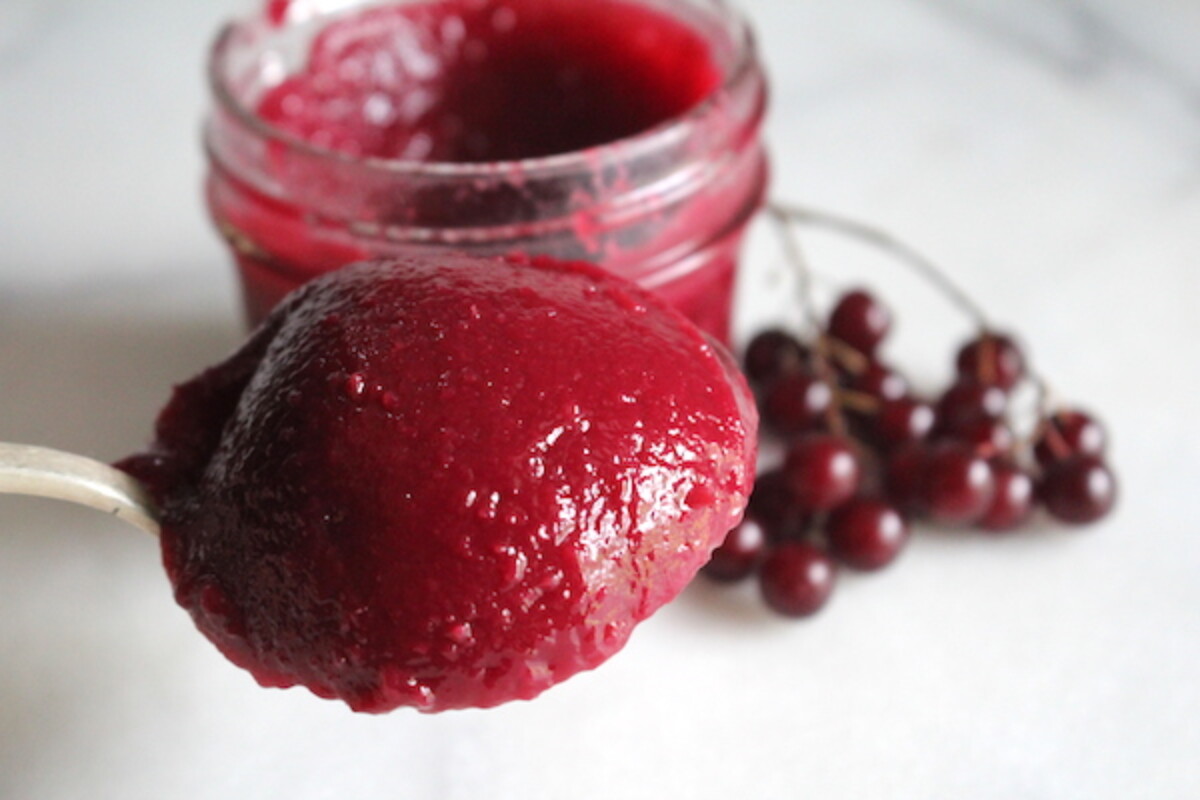
It set very firm without added pectin, and I could scoop whole spoonfuls that retained their shape. I stirred the mixture to loosen it up, and that gave it a spreadable consistency.
It’s mostly smooth but has much more body than chokecherry jelly.
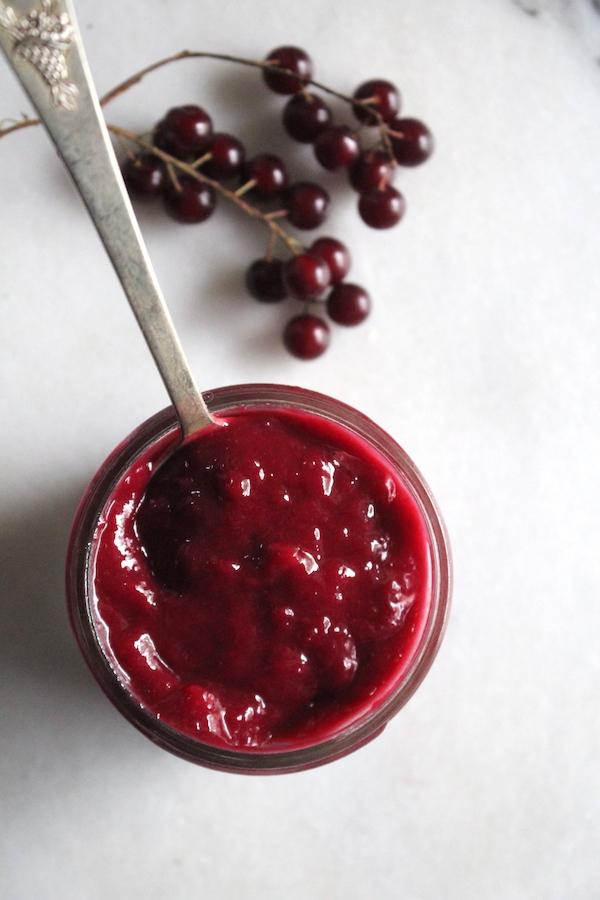
In the end, it was an interesting experiment, but the flavor is actually a lot better with a simple chokecherry jelly. I think the fruit skins/pulp gave the chokecherry jam a bit of bitterness, not a lot, but enough to distract from the simple pleasure of the finished jam.
I’ll stick with chokecherry jelly, and let my chickens enjoy the pulpy seeds that come out of the jelly bag.
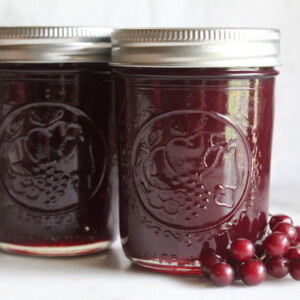
Chokecherry Jelly (and Jam!)
Equipment
- Ball Regular Mouth Canning Jar 8 oz. 12 pk
Ingredients
- 4 cups Chokecherry Juice, from 5-6 lbs Chokecherries
- 2 to 6 cups Sugar, see note
- 1 medium lemon, juiced, optional
Instructions
- Clean and de-stem the chokecherries. Extract the juice, either in a steam juicer or by simmering them for roughly 20 minutes with 1 cup of water. Strain through a jelly bag for at least 2 hours.
- Measure the resulting juice and place 4 cups in a jam pot.
- Add sugar and lemon juice (if using).
- Bring the mixture to a full rolling boil in a deep heavy-bottomed pot, stirring frequently to prevent scorching and overflows.
- Cook on medium-high heat until the mixture reaches gel stage (about 15-20 minutes). Test for gelling on a plate that's been chilled in the freezer, or cook until it reaches 220 degrees on an instant-read thermometer.
- Pour the chokecherry jelly into prepared canning jars leaving 1/4 inch headspace and cap with 2 part canning lids.
- Store the finished jam in the refrigerator, or process in a water bath canner for 10 minutes. Turn off the heat on the canner, allow the jars to remain an additional 5 minutes, then remove to cool to room temperature.
- After 24 hours, check seals and store any unsealed jars in the refrigerator for immediate use. Properly canned and sealed jars will keep in the pantry for 12-18 months. Refrigerate after opening, and use within a few weeks.
Notes
More Chokecherry Recipes
Looking for more delicious ways to use chokecherries?
More Easy Jelly Recipes
Want to keep the jelly train rolling?
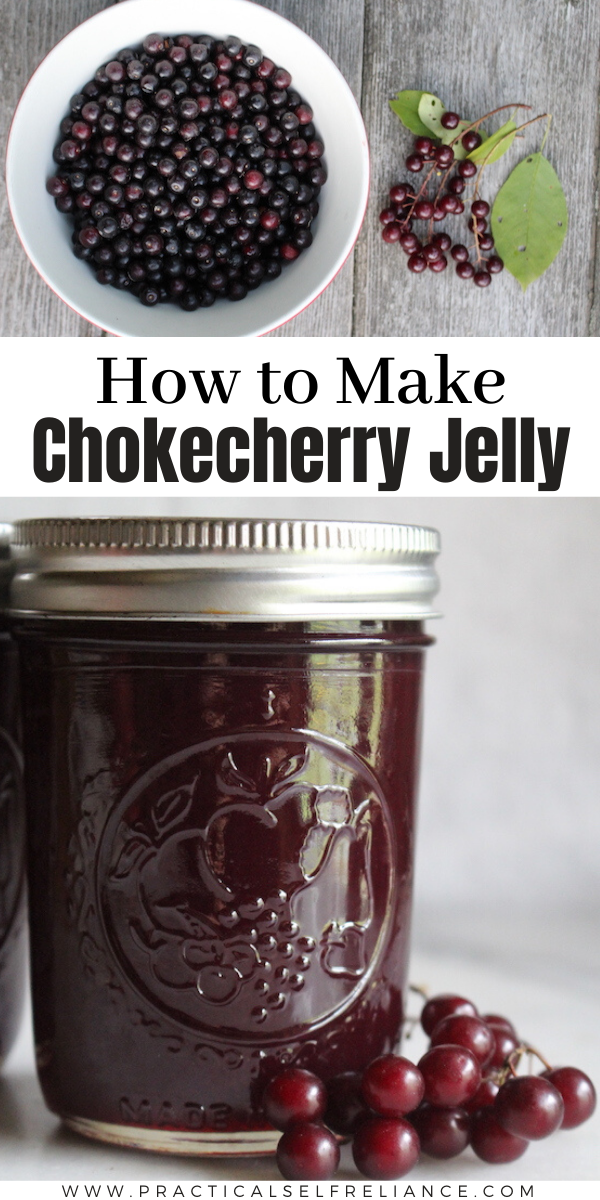
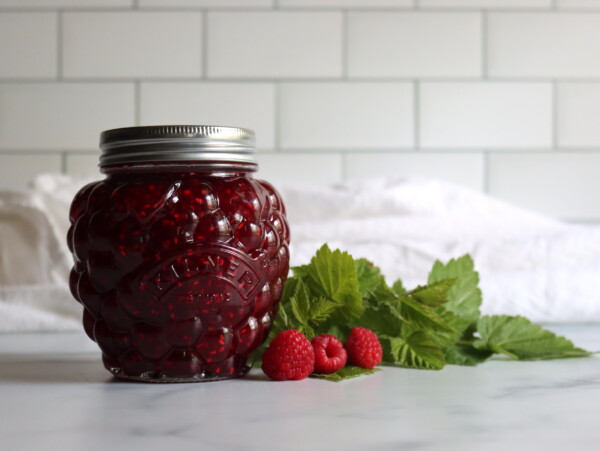
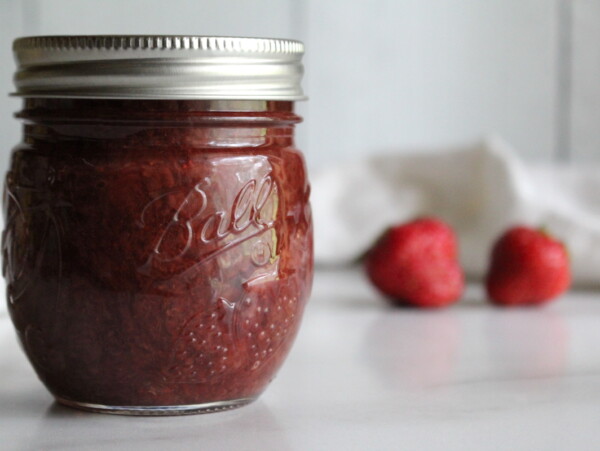
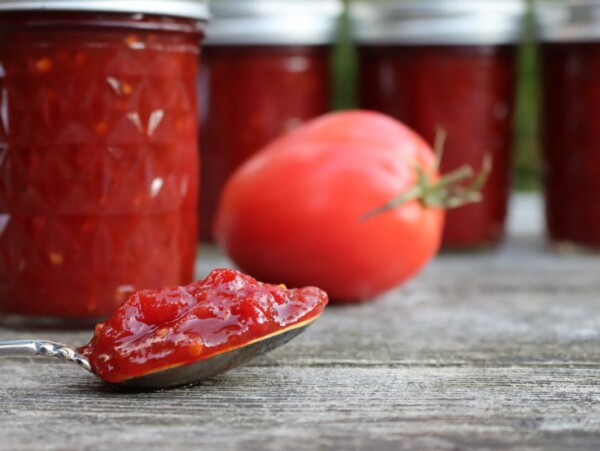
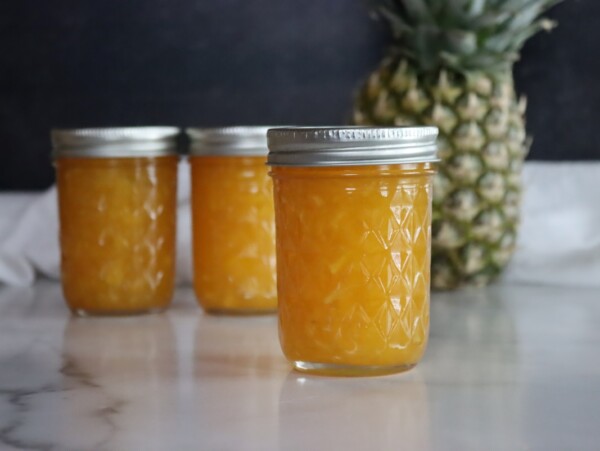










Just finished my second batch…am so very happy that I found your recipe….for years I have struggled with jelly and syrup not turning outtheway I wanted but this recipe did notletme down…was worth the effort…I used 2 1/4 cups sugar and had to use bottled lemon juice…and it was a great success and the hubs loves it thanks and will try more of your recipes with raspberries etc thanks again
Lovely! So glad you liked it!
I was very happy to come across this method of making chokecherry jelly, and it works beautifully! Thank you!
The 4 cups of chokecherry juice turned into 2 cups of jelly. Does adding commercial pectin give the end product a higher yield?
I’m sticking with your recipe. It is absolutely delicious! Thanks for posting! 🙂
The pectin does reduce the cooking time required so yes it will most likely produce a higher yield.